Roman cuisine is home to the Roman city of Italy. It usually comprises fresh, seasonal, and simple rituals from the Roman Campagna’s common ingredients.
As the central gastronomical point in ancient history borrowed some well-known culinary arts from the expansion into the Roman Empire.
The Italian Renaissance had many great Roman chefs who worked for the popes, which elevated the standard of Roman cuisine.
So, let’s roll up our toga sleeves and start kneading our bread. The remainder of the article deals with the classic recipes of the Mediterranean: Grapes, Olive, and Grains.
Better known as The Mediterranean Diet, they were the staple ingredients in the Roman kitchens for their versatility. These crops were often grown as cash crops, edibles, and for medicinal purposes.
Romans used Grapes as fruits, sauces, and wine; consumed grains such as Barley, Wheat, etc., as porridge, cakes, and bread, and Olives were crushed into oil and consumed fruits. Mentioned below are some of the consumed cuisines in all of Rome:
10. Barley
Content

Besides preparing stew out of grains such as barley, they baked lofty bread pieces. The military, as well as the urban population, most commonly consumed Barley bread. It was a staple reliance of the lower masses as they fed on coarse loaves of barley bread.
Barley being an essential supplement of carbohydrates, it imparted stamina and helped in weight gain—the Roman gladiators, who possessed fabulous physique and vital energy, fed on this potent source. Particularly for the same reason, they were also called hordearii, which translates to barley men or eaters of barley.
Similarly, every household prepared barley gruel, especially common among the peasants. Sprouted barley was also given to the gladiators in the same servings as a gruel.
Barley is a hard-to-digest grain, which, when grown, would leverage digestion and keep intact the nutrients. It is also easily cultivated because of its resistant and adaptive properties. Thus, it was an appropriate and common grain in the ancient Roman era.
9. Olive Oil
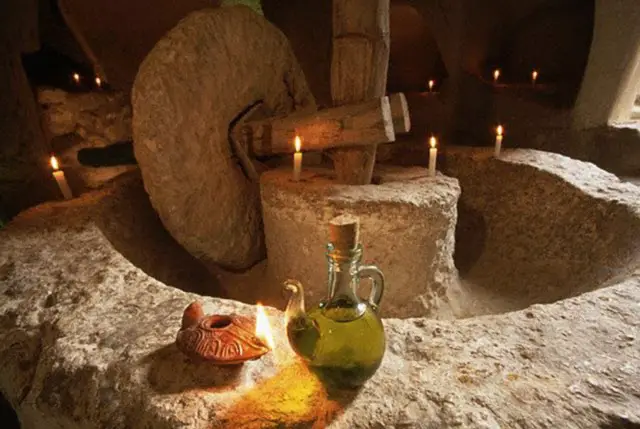
Olive oil was an essential commodity in the ancient Roman era. It was not limited to the Roman kitchens’ parameters but was also used in lamps and the bathroom for oiling and beautifying. It did the work of a bathing soap during Roman baths as well as of a moisturizer afterwards.
Roman Africa boasted prolific olive orchards. The emperors of Rome highly encouraged olive plantations and olive oil manufacturing on a large scale. Large levers were developed for their extraction. Although Spain was also an exporter of olive oil, Rome’s product in Italy was considered refined quality oil.
As a fruit, olive was the most common and most consumed type of fruit in the Mediterranean. As an oi, all main dishes were fried in olive oil. It has properties that treat every part of the body’s illnesses, whether consumed internally or externally. Hence, it was a staple part of the Mediterranean diet as well as the worldwide diet today.
Olive oil was drizzled as a dressing over salads, fruits, vegetables, and nuts. Foodstuff was cooked (fried or boiled) in olive oil. It maintained the weight of the workers as well as the military men with its nutritional values. Many of the spices and sauces were layered with just a bit of this golden elixir.
8. Posca
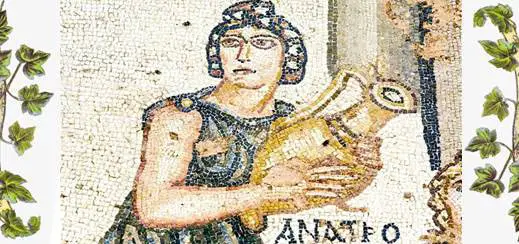
The despised drink of the upper class, Posca, was a regular find at the plebeians’ houses. Made from acetum, a low-quality wine, it was a strong liquor quite like the vinegar in taste. Often, the wasted wine or its spoilt leftovers were also transformed into this potent drink.
It was a concoction made by watering the contents of wine and adding other herbs and spices. Posca was also as healthy as it was popular because the fermented concoction would brew Vitamin C and other antioxidants.
It was also popular amongst the military camps. Indulging in high-quality wines was marked as an act of disrespect, so sometimes it was banned from the armies. However, Posca was passed around and consumed by maximum army personnel.
Besides relishing the taste buds, parting vitality to peasant health and respite to the Roman legions, Posca was also a water-cleanser because of its characteristic acidic content.
The quality of water in those times was questionable. Adding vinegar and brewing a Posca would save the water from contamination by killing the germs.
7. Fruits
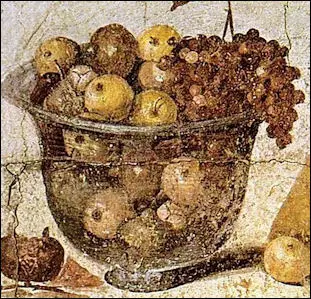
The ancient Roman cuisine was incomplete without fruits and nuts. Some of the wildly growing fruits were Grapes, Apples, Plums. Grapes were, of course, distinguished for making wines and also consumed as fruits.
Other fruits included figs, apricots, and varieties of pomegranates. Quinces, dates, apricots, cherries, currants, melons, etc., were widely planted in the vast Roman lands and enjoyed their full harvest. Fruits were a part of their diet from the beginning of the day to the end.
Dried fruits such as Raisins, dried figs, etc., were used to make spices and added as herbs in some dishes and drinks.
The peasants could not afford meat back then, so they would feast on wild berries, plums, and just whatever grew in the fertile Roman lands. The Romans were adept at conserving food products. So, some fruits were even preserved in salt-water or brine as pickles.
The most consumed fruit, among others, was the Carob. It was known to be flavorsome, and the Romans added Carob to give a chocolate-like taste to any bland dish.
It was another from the list of borrowed delicacies from their predecessors, the Greeks.
6. Vegetables
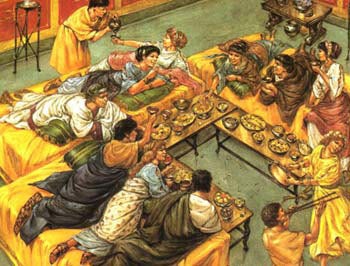
Vegetables such as lentils, peas, and beans were the most common ones in the old Roman picture.
The lower-class people could not afford only vegetables, so they stuck to the common ones.
Romans enjoyed the process of farming as well as serving. They would portion green leafy vegetables and a dressing of some herbs with a drizzle of vinegar and enjoy each meal.
The peasants would cook beets, gourds, and leeks in sauces as appetizers or bread as a simple supper.
The elites would consume asparagus, artichokes, cabbage, turnips, carrots, chards, onions, and cucumbers as appetizers in their banquet, whether the exclusive or the common, these vegetables (legumes and lentils) were a source of high protein which dominated every household in ancient Rome.
Besides that, they also preserved some vegetables in spoonfuls of vinegar or brine, just like fruits.
5. Sauces and Spices

The word spices come from species, which means an exotic commodity. Sources have obtained about 142 varieties of herbs of ancient times. Most of them arrived via Asia or Egypt. Some of the spices are ginger, cardamom, cloves, nutmeg, cinnamon, turmeric, and pepper.
Other spices include basil, thyme, rosemary, fennel, dill, mustard, and chives. These additives instantly parted sweet and savory flavors to ordinary dishes and enlivened the taste.
Similarly, sauces were prepared from a mixture of fruits, vegetables, and additives, such as the spices mentioned above.
The sauces were different for different food items, such as meat, vegetables, broth, and simple bread.
The starch was used to thicken the seasonings while the liquids were usually wines, vinegar, brine, etc.
One standard sauce was called garum. It was prepared from fermented fish intestines along with available spices.
It was seasoned well and served with other meals. Thus, the ancient Romans were very fond of spices and sauces.
4. Bread
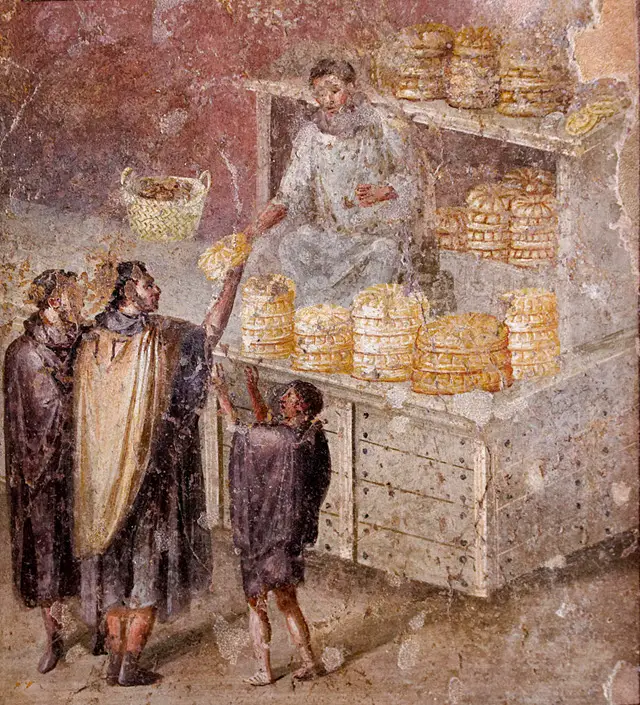
There were various types of loaves of bread produced in ancient Rome. Some of them are white, black, raised, fennel, refined slices of bread with different toppings such as poppy seeds, star anise, fennel, celery, cumin, etc.
Even the flour that made pieces of bread were of three types: refined flour, intermediate flour, and integral flour.
The bread was a staple diet in all households right from the lower class to the upper.
While the low-class people started the day with coarse barley bread, the elites had a slice of soft wheat bread with a chunk of meat. It was a common denominator between both classes.
Besides a loaf of bread, the low-class peasants also boiled it with water to make a gruel or porridge.
The upper class consumed bread made of fine quality wheat and additives such as legumes, milk, eggs, and butter. However, it was only available and affordable to the upper class.
An interesting fact is that people started baking from 300 BC. It was a trendy dish that was loved by everyone.
3. Meat and Fish
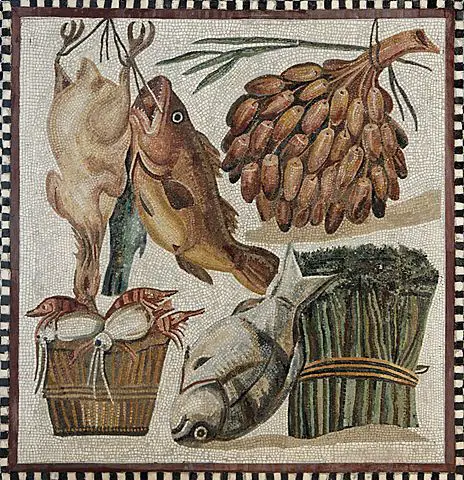
While some emperors such as Didius Julianus and Septimius Severus discouraged meat consumption, it was sold like hot cakes in ancient Rome. The slaughterhouses boasted a variety of meat, such as lamb, mutton, beef, and pork.
There weren’t any refrigerators to store excess meat. Hence, they were transitioned into blood puddings or meatballs or sausages, leaving no part to go wasted.
The sausages were made from a mixture of excess meat and herbs and nuts. It was also a popular item of trade.
A meat product of fish called the garum was made of fish intestines. It was the exclusive item belonging to the upper class only.
Although they were a common sight, from freshwater to sea fishes, they were quite costly and afforded only by Rome’s aristocrats. Some of them even housed pools to breed fishes. They also preserved fishes and ate them as pickles.
Other exotic meat products were of hare, wild boar, and rabbit. Many kinds of birds were also consumed, such as magpies, doves, ducks, quails, etc. Serving meat at lavish dinners was symbolic of pride and aristocracy.
2. Wine
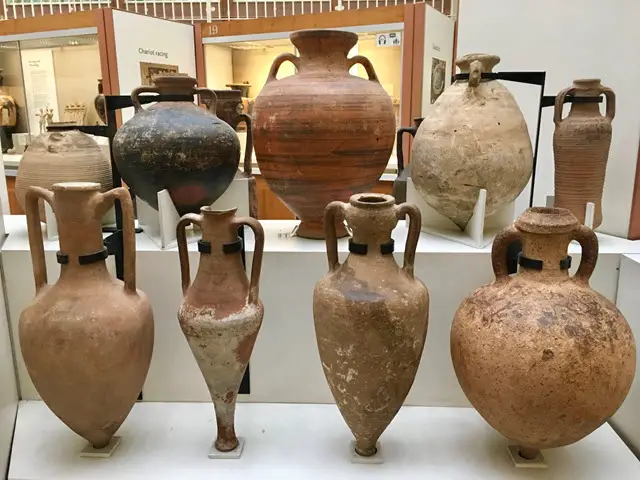
The Italian viticulture reaped wanton winery, which was shipped to Rome. It was something that was found as household consumption as well as an item for trade.
It was also used for libation and other religious purposes as it is used with daily meals.
The Romans sold wines in taverns or wine shops in jugs with the price depending on their qualities. Romans would mix their wines with water and drink mixed wines. They would also incorporate some herbs or spices for flavoring their wines.
There was Mulsum, the sweet red wine made by mixing honey and Absinthium, the forerunner of absinthe.
Drinking neat wine or only unadulterated wine was the act of a Barbarian. Similarly, beers were preferred by the Barbarians. Hence, the Romans despised beer or drinking neat wine. However, they loved the drink so much, and it was consumed in such volumes that it could be called their national drink!
1. Wheat

Wheat was the essential component of a typical Roman diet. It was used in baking fluffy loaves of bread, porridge, and pancakes. These were the trinity of staple diets in those times, all made of wheat.
The menu for the whole day included a dish made from wheat. In the morning, people usually ate pancake biscuits with honey and dates; for lunch, they consumed wheat bread and cheese, and supper was usually wheat porridge.
Wheat bread was soft and chewy, inevitably afforded by the rich while the poor fed on bran bread that they could afford. Regardless, wheat grew in all weather conditions and was abundantly available in ancient Rome. Thus, it was a primary source of diet.
Conclusion
The evidence of such diets of the ancient Roman era is found in murals, artifacts, pits of olives and grape seeds, etc. Similarly, historians have found evidence of hearth, oil-presses, and ovens at Pompeii.
Moreover, the ancient coins graced Hestia or Ceres’ countenances, the goddesses of hearth and agriculture, respectively. The frescoes and coins were etched with wheat chaffs that glorify the importance of agriculture.
These staples evolved through the social, political, religious, and cultural upheavals of Rome. They have survived the taste (test, puns?) of time from the ancient Roman hearths right to our platter on the table today.
